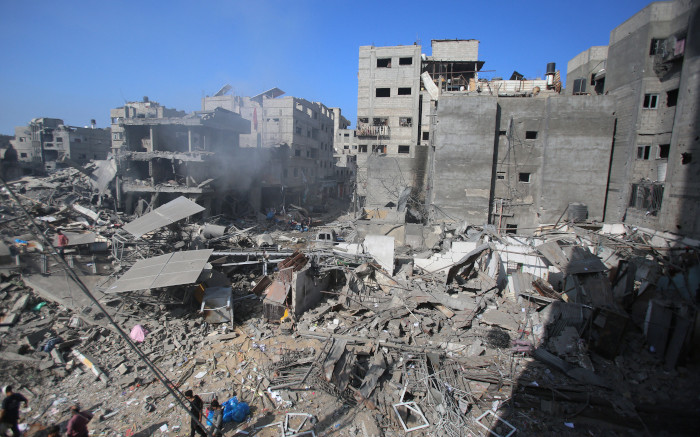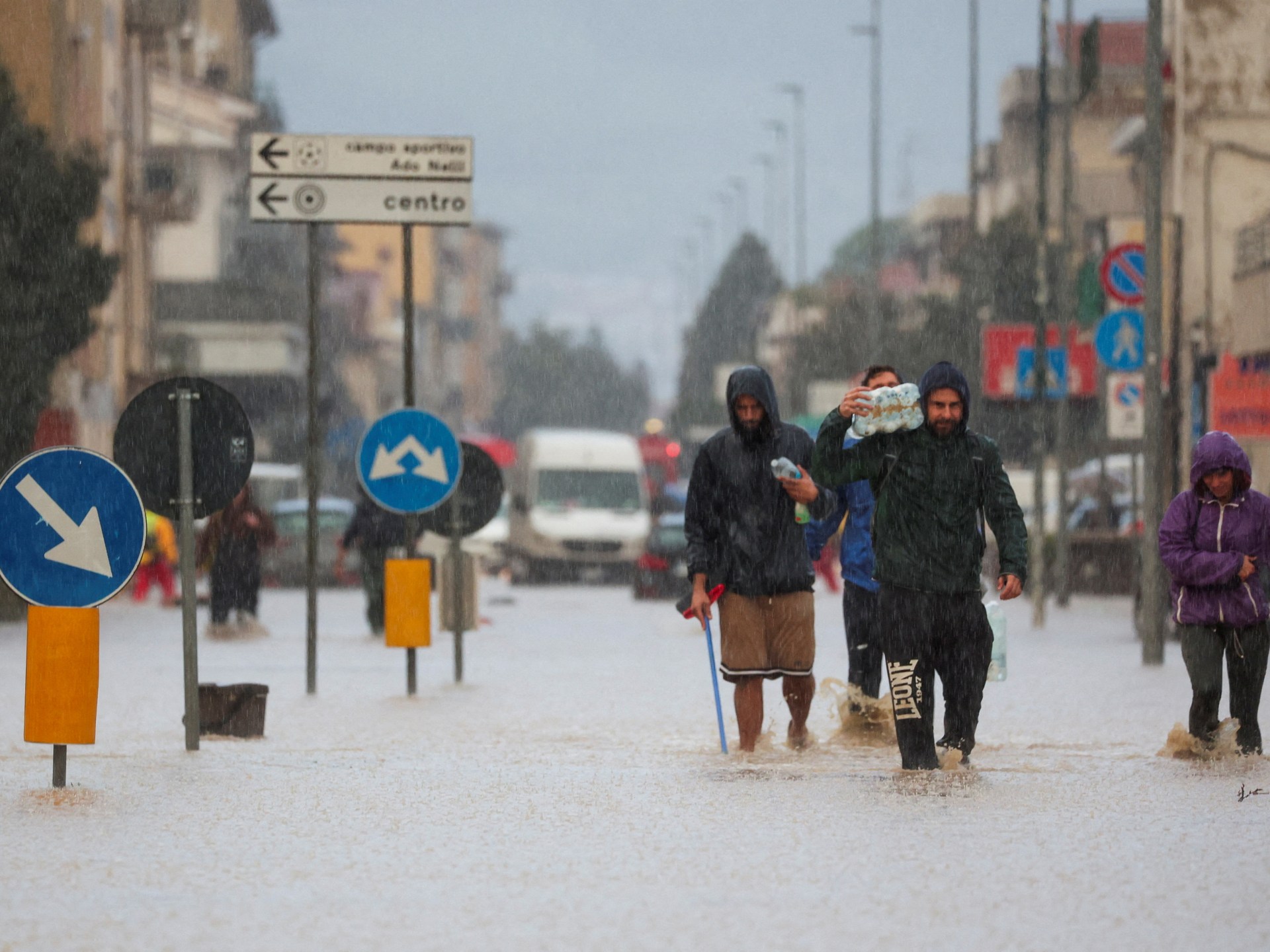
On December 14, I came across a report on CNN’s website titled “Watch Clarissa Ward’s Report from Gaza for the First Time Since the War Started,” which caught my attention, as good headlines usually do. The subheading piqued my interest even further: “CNN’s Clarissa Ward witnessed the horror and humanitarian crisis unfolding in Gaza when she visited a UAE-run field hospital in Rafah.”
American journalists had not reported from Gaza – except for a few embedded with Israeli troops – because Israel, as the occupying power that controls Gaza’s borders, denies foreign journalists access and puts pressure on Egypt to do the same. So I was intrigued by how Ward had managed to gain access and saw her report as a chance to learn whether such on-the-ground reporting would make up for the largely terrible Western mainstream media coverage of the last nine weeks.
Over the past two months, I have observed highly pro-Israel, distorted and incomplete reporting, particularly on American television.
I saw that most news anchors and anchors expressed a strong anti-Israel bias in their words, tone, and editorial decisions. The military analysis by retired senior US officers was equally anti-Israel and anti-Hamas.
The flood of deeply human, personal, heartfelt and emotional reporting on Israeli hostages and victims contrasted with much more superficial and sparse reporting on the Palestinian victims and prisoners.
So I wondered whether the report from a field hospital in Gaza would be better, more balanced and more humane. So I clicked on CNN Story link to find out how it was reported from Gaza amid mass murder and human suffering. Below are some observations about the strengths and weaknesses of the report. It is important to highlight them as an example of the practices that mar most U.S. media coverage of the Gaza war.
The strength of the report is that CNN and Ward and their team took the trouble to go into the Gaza Strip, see for themselves its human and material conditions, and bring with them the images, words and feelings of a handful of Palestinians from Gaza to share with the world. I welcome and thank them and hope that they encourage other journalists to enter Gaza through all possible safe routes.
The report also familiarizes viewers with the scale of human suffering, fear and helplessness that characterizes Gaza today. It features excerpts from the stories of a number of victims, including young children and an orphaned toddler.
The video also captures the moment Israel bombs a site near the hospital; It shows the frightening feeling of hearing and feeling the impact of a grenade or bomb that Palestinians in Gaza experience every hour.
Ward maximizes the powerful combination of images, quotes from people she interviews, and her own descriptions of what television at its best does so well. She beautifully allows the viewer to feel what any hospital visitor would experience when she says she feels “another punch in the gut in every bed,” as I did when I saw her report. She rightly calls the mass suffering and incessant death in Gaza “one of the greatest horrors of modern warfare” and “a window to hell.”
Elsewhere, however, the report falls short of journalism’s responsibility to provide audiences with a reasonably complete picture of the situation on the ground in Gaza. Here are some examples of how an additional sentence, phrase, or just a few more words would have allowed viewers to grasp the full context of these hospitalized young Palestinians’ lives, amid the causes, victims, and participants of the broader conflict.
- At the beginning, Ward mentions only once Israel’s more than 22,000 military strikes and their “intensity and ferocity.” But it fails to mention that the Israeli bombings have been so indiscriminate and deadly that legal scholars consider what is happening in Gaza to be genocide and there are several major legal battles in the United States and Europe to stop it.
- According to the report, most patients are women and children, who also account for two out of three deaths. However, it does not address the fact that Israel’s bombing has resulted in more than 80,000 Palestinians dead, injured and missing, most of whom are civilians at home, in hospitals or in UN-run schools that have been converted into emergency shelters were, were killed.
- The report mentions that the UAE hospital is accepting patients from other medical facilities that are overcrowded, but does not specify why this is – because Israel has systematically bombed and raided most Gaza hospitals until they were out of order. There is also no mention of the hundreds of medical workers Israel has killed, which has led to a severe shortage of medical personnel.
- The report points to the use of an improvised tourniquet on an injured man who was taken to the hospital. However, it does not appear that this is due to Israel blocking the delivery of life-saving and even basic medical supplies.
- All of the suffering people Ward interviews—with their amputated limbs, killed family members, broken bones, and disfigured faces—are mostly portrayed in passive, almost abstract contexts that capture neither their full humanity nor the full nature of the conflict. As a result, most of the Palestinians we meet in the story seem like one-dimensional, cartoonish characters, expressing only fear, misery and worry. As an audience, we mostly feel sorry for the Palestinians, but we don’t really know them because we have no other feelings for them other than pity.
- We are told that one of the patients – the 20-year-old Lama who lost her leg – was training to be an engineer. However, we are not informed that Israel has destroyed not only his body but also his dreams by destroying Gaza’s universities and making it impossible for Gaza’s youth to pursue higher education in the coming years.
- The report makes clear that Lama and her family fled their home on Israeli orders, but were then bombed in the house where they sought refuge. But we are not told that 80 percent of Gaza’s 2.3 million residents have been displaced and are living in appalling conditions, made worse by Israel’s total blockade that has cut off food, electricity, water and medicine.
- The report discusses Gaza in the context of other conflicts in Europe and the Middle East, but does not mention it as the latest episode in Israel’s 75-year-long ethnic cleansing, colonization and occupation of Palestinians. It does not refer to the fact that the majority of Gazans are refugees or descendants of refugees who were forced to leave their homes by Jewish militias in 1948 to avoid being killed.
- While the report mentions that Israel and Egypt have made access to the Gaza Strip “almost impossible,” it appears to indicate that this is due to the threat of Israeli bombing. This justification is quite bizarre considering that Western journalists were on the front lines of the war in Ukraine, where they were subjected to Russian bombing. The report avoids saying that foreign journalists are being banned from Gaza because Israel wants to control the war narrative.
I don’t know Clarissa Ward personally, but I have known many CNN correspondents since the network’s early days and I know they are genuine professionals who want to do quality journalism. So my comments are not directed at the correspondent or CNN as a whole, but rather attempt to highlight the weaknesses of such reports, which reflect much of the U.S.’s flawed reporting on Israel’s attack on Gaza.
I raise the issue of poor media coverage of our region because I have seen in the United States, the United Kingdom and other Western countries the damage it has caused by promoting the views of Israeli and Western governments above all others.
Since the media is the public’s primary source of information about the Middle East, biased reporting has resulted in citizens being misinformed for many decades. This has maintained government support for Israel’s colonial apartheid system, which now seeks to drive more Palestinians from Gaza to the Sinai Peninsula. This, in turn, allows Israel to resist serious peace efforts and refuse to comply with international legal norms. The result is the chronic and increasingly cruel war we are witnessing today.
Our common struggle to create a world of justice and peace continues. We in the world of journalism should move quickly and forcefully to play a constructive role, using the tools we know so well to communicate truth across borders.
The views expressed in this article are the author’s own and do not necessarily reflect the editorial stance of Al Jazeera.






Recent Comments